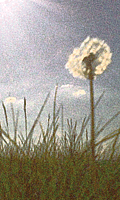


NEWS:
22 hours this month including two sessions and a special tribute to CAN
Artist Info
|
Human Expression  The band formed in 1966, with the members coming from Westminster, California, and Tustin, California (both in Orange County). Jim Quarles invented the name "because it had a mystical and otherworldly ring", and the father of one of the band members (Jim Foster) served as their manager. The two then began writing songs for the new band: "I didn't know what I was doing at the time. I just wrote the songs with Jim Foster. I didn't have any prior experience." The band formed in 1966, with the members coming from Westminster, California, and Tustin, California (both in Orange County). Jim Quarles invented the name "because it had a mystical and otherworldly ring", and the father of one of the band members (Jim Foster) served as their manager. The two then began writing songs for the new band: "I didn't know what I was doing at the time. I just wrote the songs with Jim Foster. I didn't have any prior experience."After rehearsing for six months, they went to a recording studio and cut the demo recordings for their first single, eventually securing a recording contract with Los Angeles-based Accent Records. While the "A" side of the demo single was selected, the "B" side was replaced with a song that is probably their best known recording, "Love at Psychedelic Velocity." Two more original compositions made up the second single; the demos and the released recordings of each side have survived. Both singles were mixed by Wally Heider, famed for his work with the Grateful Dead. Perhaps due to the slow sales of the band's own songs, their manager brought demos of two songs by then-unknown songwriter Mars Bonfire to the band to consider for their third single. They selected "Sweet Child of Nothingness" as the "A" side of their third single, to be backed with another original composition as the "B" side. The other song was "Born to be Wild," which did not impress Jim Quarles; in 1968, this would become a smash hit by Steppenwolf. Before the band's third single was released, lead guitarist Martin Eshleman hurt his hand and had to leave the band. Although a new guitarist was brought in, Jim Quarles left almost immediately: "This move kind of destroyed the chemistry of the band. I felt it was time to move on". Read more on Last.fm. User-contributed text is available under the Creative Commons By-SA License; additional terms may apply. Artist biography from last.fm Some other places to look for information: last.fm Discogs MusicBrainz |
